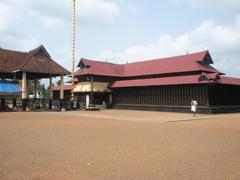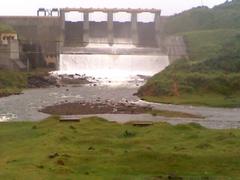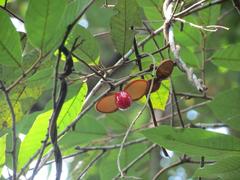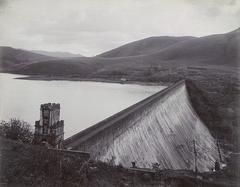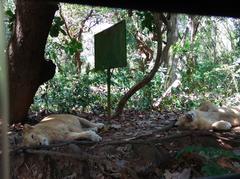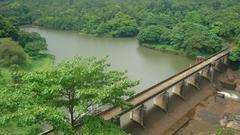Kulamavu Dam Visiting Hours, Tickets, and Travel Guide in Kerala
Date: 04/07/2025
Introduction to Kulamavu Dam
Kulamavu Dam is a cornerstone of Kerala’s hydroelectric infrastructure and a serene destination nestled within the verdant Idukki district. As a significant part of the Idukki Hydroelectric Project, the dam is celebrated for its engineering marvel, ecological importance, and scenic beauty. This guide offers an in-depth look at its history, visitor information, ecological and cultural context, and essential travel tips, ensuring a rewarding visit for all.
(Kerala Tourism, Kerala Hydel Tourism, Thrillophilia)
Table of Contents
- Introduction to Kulamavu Dam
- Historical Background
- Visitor Information
- Experiences and Activities
- Ecological and Cultural Insights
- FAQs
- Conclusion and Travel Tips
- References
Historical Background
Early Conception and Vision
The idea of harnessing Idukki’s hydroelectric potential dates back to 1919, when Italian engineer E.J. Jacob proposed damming the Idukki gorge to the Travancore government. Although initially dismissed due to financial and logistical challenges, the vision was revived in 1932 by W.J. John, with input from the Oorali tribal leader Karuvellayan Kolumban. These efforts laid the groundwork for the Idukki Hydroelectric Project, with Kulamavu Dam as a critical component.
Design, Construction, and Collaboration
The Idukki Hydroelectric Project comprises three dams—Kulamavu, Idukki Arch, and Cheruthoni. Kulamavu Dam, built as a gravity/masonry structure, was constructed between 1966 and 1977, standing at an elevation of about 3,000 feet. International support, notably from the Government of Canada, aided in its design and financing. The dam’s construction created a vast reservoir, feeding water to the underground Moolamattom powerhouse, which produces 780 MW of electricity.
Socio-Economic and Environmental Impact
The reservoir’s creation transformed local landscapes, submerging agricultural land and forests, and causing the displacement of indigenous communities. While resettlement efforts were made, many affected families faced challenges. The dam remains pivotal to Kerala’s energy supply and has fostered local development, but it also necessitated careful balancing with environmental and social considerations.
Visitor Information
Visiting Hours and Entry
- Hours: Open daily from 8:00/9:00 AM to 5:00 PM. Early visits are ideal for cooler weather and birdwatching.
- Entry: Free of charge. Registration at an onsite kiosk may be required for security purposes.
- Photography: Prohibited on the dam premises due to security, but permitted at designated viewpoints.
- Restrictions: Access may be limited during the monsoon, scheduled water releases, or special maintenance.
(Thrillophilia, Kerala Government Order)
How to Reach Kulamavu Dam
- By Road: Well-connected to Thodupuzha (40 km), Munnar (50 km), and Painavu (30 km). Taxis, local buses, and tourist vehicles are available.
- Nearest Railway Station: Aluva (110 km) or Thodupuzha.
- Nearest Airport: Cochin International Airport (~90–120 km).
- Taxi Services: Pre-arrange via keralataxi.com.
Accessibility
- Terrain: Main walkway and select pavilions are accessible; some trails and viewpoints may be challenging for those with mobility issues.
- Facilities: Temporary toilets, benches, shaded rest areas, and eco-friendly waste management during peak seasons.
- Parking: Not permitted at the dam; use designated parking areas nearby.
Best Time to Visit
- Winter (Dec–Feb): Cool, clear weather and lush scenery.
- Post-monsoon (Oct–Nov): Green landscapes and fewer tourists.
- Monsoon (Jun–Sep): Heavy rain may restrict access.
- Summer (Mar–May): Hot and humid.
Facilities and Amenities
- Limited food stalls at the dam; wider food options in Painavu and Moolamattom.
- Accommodation ranges from guesthouses to resorts; book ahead during peak season.
- Mobile connectivity is generally available but can be patchy.
Experiences and Activities
Walks, Viewpoints, and Trekking
- Scenic Walks: Enjoy panoramic views of the reservoir and hills from the dam walkway.
- Trekking: Trails through spice and rubber plantations cater to varied skill levels.
- Nadukani Pavilion: At 3,000 feet, this viewpoint offers sweeping vistas of the Western Ghats and Malankara Reservoir (Kerala Hydel Tourism).
- Birdwatching: Spot darters, kingfishers, and other local species.
Nearby Attractions
- Idukki Arch Dam: Renowned for its unique arch design.
- Cheruthoni Dam: Major part of the hydel project, with boat rides available through authorized operators.
- Moolamattom Powerhouse: India’s largest underground hydroelectric powerhouse (visits require prior permission).
- Hill View Park & Painavu: Gardens, handicrafts, textiles, and local culture.
Ecological and Cultural Insights
Biodiversity and Conservation
Kulamavu Dam sits in the Western Ghats, a UNESCO World Heritage Site celebrated for biodiversity. While the reservoir supports birdlife and local agriculture, dam construction altered river flows, reduced fish migration, and submerged habitats. Responsible tourism and conservation efforts are vital to protect remaining ecological assets.
(Kerala Tourism, IndusEdu PDF)
Cultural Heritage and Community Impact
The dam’s construction displaced indigenous communities and submerged cultural sites, including temples. Today, the region blends traditional Kerala culture with influences from migration during the dam’s construction, reflected in festivals, crafts, and daily life.
Safety and Regulations
- Visitor Limits: May apply during dam openings or special events.
- Weather Alerts: Orange/red alerts or heavy rains may restrict access.
- Security: Kerala Hydel Tourism Center and police ensure safety; comply with posted guidelines.
- Green Protocol: Littering, especially with plastic, is prohibited; use reusable water bottles and dispose of waste responsibly.
FAQs
Q: What are the visiting hours of Kulamavu Dam?
A: Generally, 8:00/9:00 AM to 5:00 PM daily.
Q: Is there an entry fee?
A: No, entry is free. Registration may be required.
Q: Are guided tours available?
A: Official tours aren’t offered, but local guides can be hired in Idukki.
Q: Is photography allowed?
A: Not on the dam premises; permitted at designated viewpoints.
Q: Are facilities available for people with disabilities?
A: Main walkways and select viewpoints are accessible, but hilly terrain limits access to some areas.
Q: Are boat rides available?
A: Yes, through authorized operators at Cheruthoni Dam.
Conclusion and Travel Tips
Kulamavu Dam is a testament to Kerala’s blend of engineering innovation and natural splendor. From panoramic walks and treks to cultural exploration and eco-awareness, the dam offers something for every traveler. Plan ahead, respect local guidelines, and immerse yourself in the tranquil beauty and layered history of Idukki’s iconic hydel landmark.
For more detailed travel guides and updates, download the Audiala app and visit Kerala Tourism, Kerala Hydel Tourism, and kerala.com.
References
- Kerala Tourism
- Kerala Hydel Tourism - Nadukani Hydel Tourism Center
- Thrillophilia - Kulamavu Dam
- Kerala Tourism: Kulamavu Dam Article
- IndusEdu PDF
- Tamizha.net - Kulamavu Dam
- kerala.com - Kulamavu Destination
- Kerala Government Order on Dam Visits
- Travellers Worldwide - Best Time to Visit Kerala
- Holidify - Kulamavu Dam
- Tripinic - Kulamavu Dam
- keralataxi.com
